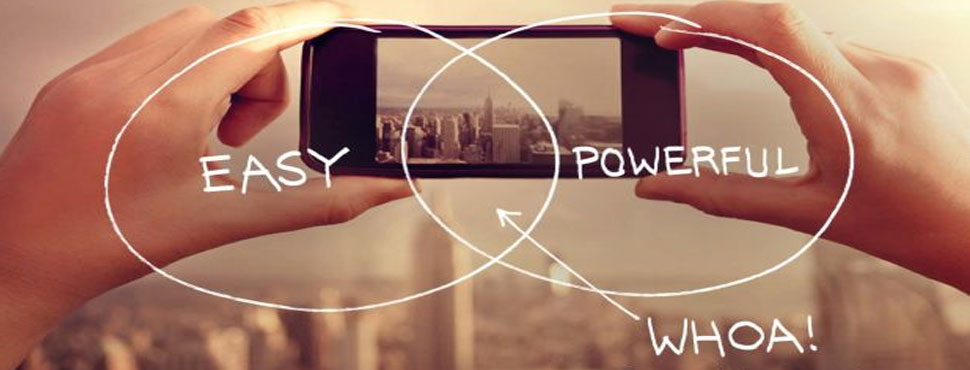“Any sufficiently advanced technology is indistinguishable from magic. -Arthur C. Clarke
The One Percent Rule of Internet culture goes something like this: 1% of users in any given community actively create new content, while the other 99% only view it. But on the new social-mobile Web, everyone is a creator.
The early wave of standalone social apps focused on unpacking core features (Facebook Messenger, LinkedIn Connected, etc), but are essentially the same user experience, albeit in more robust, dedicated mini-platforms. Now, as mobile interfaces and software become increasingly more sophisticated and user-friendly, everyday users are creating polished content rather than merely consuming it.
Instagram’s Hyperlapse app is a perfect example of this burgeoning trend, placing prosumer digital tools in the hands of anyone with a smartphone. “What was once only possible with a Steadicam or a $15,000 tracking rig is now possible on your iPhone, for free.”
“The neat thing is how quickly an amateur can produce cool things with the app,“ wrote . “For people who like to be creative — or just shoot lots of smartphone videos — Hyperlapse is a fun and free new outlet.”
What used to take a bunch of expensive equipment, lots of time, and years of expertise is now distilled into a point, a click, and few taps of a small screen.
It’s the great Democratization of Content.
And it could disrupt the established process of brand marketers and their agencies. As these pro-level digital tools get put in the hands of the public, brands may rely more and more on niche community influencers and ‘regular’ people to tell their brand stories and create their marketing assets, once the exclusive, hallowed domain of agency creatives. These new breed of mobile apps will allow non-professionals to make professional-looking visual content. UGC used to be a somewhat disparaging term for content that looked crappy. Now with beautiful apps like Hyperlapse, that definition may need to be re-examined.
“Before Hyperlapse, you’d need knowledge and skill to stitch thousands of photos together. That can all be done with one button,” said Jack Simcock, strategy director of UK-based social media agency Telegraph Hill. “It’s slick, it’s easy and it allows you to be more creative without really trying.”
This demystifying of creativity signals a huge shift in power, both for brands and users. Democratization of Content is breaking down the One Percent Rule, pulling it somewhere closer towards the middle. And mobile video creation like Hyperlapse and Vine and emerging tools like Ochoand Storehouse are at the epicenter of the movement.
“You’re going to have more and more tools that are created to make it easier for video to be created and distributed,” James Borow, CEO of SHIFT, a marketing software company. “Hyperlapse is more of an indicator of the level of seriousness Facebook and Instagram as a whole are taking with video creation. There’s a battle being played out on user-generated content and distribution. You can see that anywhere, whether it’s Vine or the series of tools Instagram has, Amazon now owning Twitch, Google with YouTube. There’s clearly a lot of investing going into helping people create and distribute video in a very scalable way.”
The Internet is a constantly-evolving entity that builds on the last brick of technology to birth new user experiences. Social media changed the way we interacted, mobile changed the way we connected, and now both are intersecting to change the way we create. The upside to apps like Hyperlapse are that they will allow us to see different perspectives, to experience more of the world from the comfort of our small screens than ever was possible before in history.
Matthew Bryan Beck is a New York-based writer, strategist, and advertising creative and a contributor to ReadWrite. Follow him on Twitter @ibeck.

